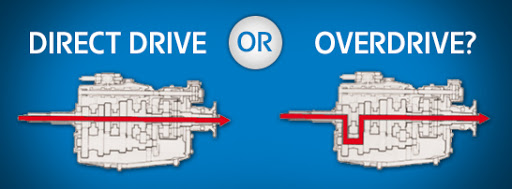Tips to Select the Right Engine + Transmission Combination for a Truck
A fleet truck can be easily overloaded if it
does not come with the proper powertrain (engine+ transmission) combination,
thereby resulting in increased expenditures for maintenance servicing. The combination
of these components plays a critical role for the truck performance capacity.
There is no standard solution when it comes to choosing the perfect powertrain
for any truck. In this article, we will consider some helpful tips for owners
of truck fleets on selecting truck components that have a significant impact on
its performance, fuel economy and maintainability.
Application target
The first question that has to be clarified
during the quest for a perfect powertrain system is the future application of
the truck. When talking about the truck application, it is necessary to
consider such factors as truck’s operating weight, max possible starting grade,
and designated road surface help to specify what transmissions and engines will
make your truck a real asset for any business. It should be noted that there
are some transmissions that have certain restriction concerning the GCVW rates.
All these important parameters mentioned above help to determine what kind of
gearing and torque will be needed to operate most efficiently at specific
cruise speeds.

Significance of Drivability
One of the most important aspects for truck
drivers is the drivability of the vehicle. Depending on the application, it is
necessary to take into account a wide range of parameters (smoothness of
operation, maneuverability, speed of gear shifting, availability of creep mode)
that ensure safe and efficient operation of the truck.
For instance, it is extremely important for ambulance/fire
and emergency vehicles to shift gears and pick-up the speed as fast as
possible. In applications that are frequently exposed to stop-and-start
traffic, it is necessary to pay attention to such aspects as clutch wear and driver
fatigue (in such cases automatics may be more preferable).
Engine Displacement
The requirements imposed on the engine
displacement greatly depend on the vocation of a specific truck. For example,
trucks used for transportation of heavy loads may benefit from using a smaller
engine displacement in order to save weight. Fleet managers should collaborate
closely with dealers to determine the required engine size and to come up with
the most efficient powertrain combination.

Manual vs Automatic
Selecting an ideal transmission type is crucial when considering a particular kind of fleet operation. When it comes to choosing between manual and automatic gear shifting units for trucks, it is necessary to keep in mind the following aspects: vehicle application, driver’s expertise, main characteristics of the engine (power, torque).
Truck drivers with different professional
competence levels have recently been giving preference to automatics because of
numerous advantages of modern self-shifting solutions. Automatics free drivers
from the necessity to constantly engage the clutch pedal and shift gears
manually, thereby allowing them to concentrate on the road and reduce the
possibility of road accidents.
As the global automotive industry gradually
shifts to complete automation regarding transmission solutions, owners of truck
fleets also cannot ignore the fact that new heavy-duty automatic gearboxes
outperform conventional manuals in several important aspects (from performance
capacity to maintenance cost).
Direct-Drive or Overdrive

Once the transmission type has been specified,
fleet owners have to decide on a direct-drive or overdrive configuration. Until
recently, overdrive options have been enjoying much more popularity. The thing
is that previously the automotive market offered a limited number of direct-drive
manuals on the market, and there was restricted axle ratio coverage to work
with the direct-drive. But most of modern AMTs come in both direct and overdrive
configurations. In fact, direct-drive units are more fuel efficient than their
overdrive analogs.
Performance and Economy
Another important factor to consider when
determining the main powertrain components is the priority between the
performance and economy of the fleet truck. If good performance characteristics
allow drivers to feel more comfortable on the road, high economy rates allow
businesses to reduce the overall cost of operations. Achieving the right
balance between these two important parameters is a big factor when determining
the right powertrain setup.

Drivers
Driver satisfaction also should not be
disregarded in this important design aspect. The right powertrain is not just
about the performance and economy ratio. The correct combination should allow
the driver to operate the truck in the most comfortable way possible, thereby
avoiding excessive fatigue and increasing safety on the road.
The competence and flexibility of drivers can
differ, depending on the kind of fleet and peculiarities of the business. In
fact, most of the drivers now are reluctant to drive manual trucks or simply
don’t know how to do it. When considering the powertrain configuration, it is
important for fleet owners to understand the level of driving skills of their
employees.
Learn what it is like to drive a truck equipped with an AMT transmission and how’s it different from manual truck experience
Resale Value
Finding the appropriate powertrain setup also
should be examined from the resale perspective. It is not a secret that major
vehicle manufacturers gradually shift from manual to automatic transmissions,
and it has a significant impact on the used vehicles market. Currently,
automatic trucks have a higher resale value.
When it comes to the engine, the choice between
diesel and gasoline-powered engines depends on qualities for a specific
business. While diesels ensure longer operation and better fuel economy, while gasoline
engine vehicles are notable for a lower upfront cost.
Summary
All in all, a proper selection of the main powertrain components, namely engine and transmission, cannot be performed separately, as both components are interdependent when it comes to ensuring the highest performance and economy rates. Moreover, it should be born in mind that operating characteristics must match application peculiarities of the truck.








